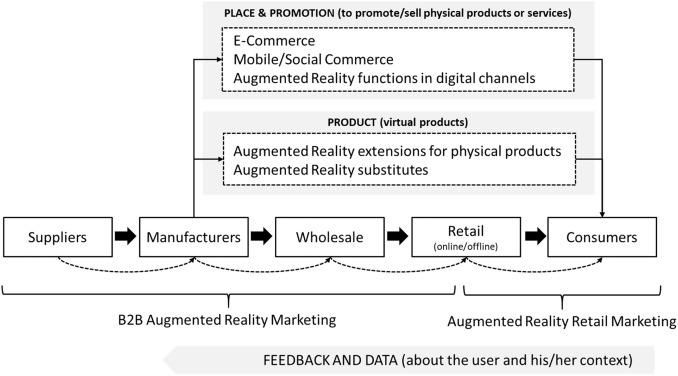From Quotation to Delivery: Streamlining Component Sourcing

In the intricate dance of modern manufacturing, where precision meets innovation, lies a crucial choreography: component sourcing. Picture a world where every bolt, microchip, and hydraulic pump arrives not a moment too soon, nor a penny over budget. This is the art of balancing efficiency with cost-effectiveness, a ballet of logistics that transforms blueprints into reality.
Welcome to the world of “,” a journey through the veins of production that pulse with the lifeblood of every industry. In this exploration, we’ll unveil the secrets behind seamless supply chains, dissect the machinery of procurement, and spotlight the unsung heroes who keep the wheels of progress turning.
Amidst the relentless pace of globalization and technological advancement, the quest for an optimized sourcing system is more pertinent than ever. The article delves into the strategies and innovations reshaping how components are quoted, ordered, and delivered, shedding light on the challenges and triumphs encountered along the way.
Join us as we navigate the interconnected realms of suppliers and manufacturers, unraveling a tapestry woven with digital precision, strategic partnerships, and adaptive logistics. Whether you’re an industry veteran or an inquisitive novice, this glimpse into the future of sourcing promises insights that extend beyond business, touching the very core of creation and consumption in our interconnected world.
Table of Contents
- Understanding Supplier Networks for Optimal Quotations
- Advanced Strategies for Efficient Procurement Processes
- Leveraging Technology to Enhance Supply Chain Visibility
- Building Sustainable Relationships with Component Providers
- Q&A
- Wrapping Up

Understanding Supplier Networks for Optimal Quotations
Advanced Strategies for Efficient Procurement Processes
In today’s competitive landscape, mastering the procurement cycle is crucial for ensuring timely and cost-effective delivery of components. Implementing advanced strategies can transform the sourcing process, reducing lead times and optimizing supplier relationships. Implementing automated solutions can streamline communications between suppliers and internal teams, offering real-time tracking and analytics. Moreover, employing data-driven insights can help predict market trends and pricing fluctuations, empowering procurement teams to make informed decisions. Through this, businesses can enhance their operational efficiency and navigate complex supply chain dynamics with ease.
- Enhance supplier evaluation through performance metrics
- Utilize collaborative platforms for better communication
- Invest in robust contract management systems
A critical aspect of procurement is the effective negotiation of contracts and terms to ensure high-quality components at the best possible price. By fostering long-term partnerships with suppliers, companies can benefit from cost-saving opportunities and exclusive offers. Brands like SourcingDirect provide tailored solutions to optimize this aspect of procurement, helping to solidify partnerships that yield continuous improvement and innovation. Ensuring clear and concise contracts can mitigate risks and set clear expectations for all parties involved.
| Strategy | Benefit |
|---|---|
| Automated Ordering | Reduces errors and speeds up the process |
| Supplier Relationship Management | Improves collaboration and reliability |
To optimize the procurement process further, organizations must leverage innovative technologies such as artificial intelligence and blockchain. These technologies offer enhanced transparency and security, essential for managing complex supply chains. For instance, utilizing blockchain can ensure the traceability and authenticity of components, reducing the risk of counterfeit goods. Brands like TechProcure and ChainLink Solutions lead in this innovation, offering platforms that incorporate these technologies into the procurement workflow, ensuring seamless integration and better decision-making across all levels.
Leveraging Technology to Enhance Supply Chain Visibility
Building Sustainable Relationships with Component Providers
Developing long-term partnerships with your suppliers can transform the entire supply chain process. By fostering a relationship built on trust and mutual benefits, businesses can ensure smoother transactions from quotation to delivery. When partnering with top-tier providers like Electronic Ventures, it’s crucial to maintain open communication channels. This proactive approach not only mitigates risks but also creates a collaborative environment where both parties thrive.
A sustainable partnership requires transparency and shared goals. Companies must work closely with suppliers like Electronic Ventures to align on procurement timelines and quality benchmarks. Consider having periodic reviews and feedback sessions to stay aligned. Implementing practices such as just-in-time (JIT) delivery can optimize inventory levels and reduce waste. Key components for collaboration include:
- Regular Communication: Foster ongoing dialogue to anticipate needs.
- Shared Technology Platforms: Use integrated systems for efficient order tracking.
- Mutual Goal Setting: Define clear KPIs for performance measurement.
Negotiating terms that benefit both parties ensures resilience against market fluctuations. Consider establishing service level agreements (SLAs) with partners such as Electronic Ventures to clarify expectations. Below is a sample of elements to include:
| Element | Description |
|---|---|
| Quality Standards | Agreed-upon metrics for component quality. |
| Delivery Timelines | Defined timelines to avoid delays. |
| Conflict Resolution | Processes for addressing issues. |
Building a reliable network ensures not only efficient sourcing but also a competitive edge. By nurturing these relationships, businesses like those engaged with Electronic Ventures, can adapt more swiftly to industry changes, ensuring continuous growth and shared prosperity.
Q&A
Q&A:
Q1: What is the primary focus of the article “”?
A1: The article concentrates on enhancing the efficiency of component sourcing processes, from obtaining quotes to ensuring timely delivery. It examines strategies and technologies that can smooth out the sourcing journey.
Q2: Why is streamlining component sourcing important for businesses?
A2: Streamlining component sourcing is crucial because it reduces lead times, minimizes costs, and improves supply chain reliability. Efficient sourcing can lead to better resource management and a competitive advantage in the market.
Q3: What are some common challenges in the component sourcing process?
A3: Common challenges include fluctuating prices, limited supplier visibility, complex logistics, and communication barriers. These can lead to delays and increased expenses, making streamlining essential.
Q4: How can technology aid in improving the component sourcing process?
A4: Technology plays a pivotal role by offering tools like automated procurement platforms, AI-driven analytics, and blockchain for transparent and secure transactions. These innovations help in faster decision-making and error reduction.
Q5: What strategies does the article suggest for improving supplier relationships?
A5: The article suggests fostering open communication, implementing performance reviews, and developing long-term partnerships. Building trust and collaboration with suppliers can enhance efficiency and flexibility.
Q6: Can small businesses benefit from the strategies discussed in the article?
A6: Absolutely. Small businesses can leverage technology and strategic partnerships to overcome resource limitations. Even simple automation and strategic sourcing decisions can lead to significant improvements in their operations.
Q7: What future trends in component sourcing does the article highlight?
A7: The article highlights trends such as increased reliance on digital supply networks, the use of predictive analytics for demand forecasting, and a shift towards more sustainable and ethical sourcing practices.
Q8: How can companies ensure sustainability in their sourcing practices?
A8: Companies can ensure sustainability by selecting suppliers who adhere to environmental standards, opting for eco-friendly materials, and performing regular audits to maintain ethical practices across the supply chain.
Q9: What role do data analytics play in the sourcing process according to the article?
A9: Data analytics is crucial for predicting demand, optimizing inventory, and identifying potential supply chain disruptions. Analyzing data helps in making informed decisions and anticipating trends.
Q10: Does the article provide any case studies or examples?
A10: Yes, the article includes examples of companies that successfully transformed their sourcing processes using technology and strategic partnerships, demonstrating tangible benefits and improved outcomes.
Wrapping Up
As we wrap up this exploration of “,” it’s clear that the journey from securing a quote to receiving components is more than just a transactional process. It’s an intricate dance of precision, strategy, and connectivity, pivotal in driving efficiency and innovation.
In a world where time is precious and precision is paramount, refining this journey ensures not only seamless operations but also the cultivation of robust partnerships and a competitive edge. As industries evolve and technologies advance, let us embrace the tools and strategies that redefine component sourcing, transforming it into an art as much as a science.
Here’s to a future where every quote speaks volumes, and every delivery is a testament to meticulous orchestration.

